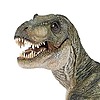HOME | DD
 GonzaloTCDA — Not-so-old drawings - Spec evo/xeno dragons 2
GonzaloTCDA — Not-so-old drawings - Spec evo/xeno dragons 2

#fish #aliencreature #alienplanet #chicken #cockatrice #dragon #leviathan #pencildrawing #reptile #seaserpent #basillisk #speculativeevolution #speculativexenobiology
Published: 2023-12-05 19:45:56 +0000 UTC; Views: 3565; Favourites: 35; Downloads: 0
Redirect to original
Description
A drawing of also unknown date behind the paper of the latest deviation, and like it, it was possibly done circa 2021/2022, and shows another of my takes in fantasy dragons.Unlike the previous drawing that has the evolution tree, this is an attempt to primitively classify dragons with variable features such as number of limbs, tetrapod class and magic abilities such as fire breathing, and this drawing includes separate wyrms, sea serpents and lindwurms, wyverns and amphitheres, snake-like basilisks and cockatrices, and the obscure, heraldic zylant.
Above this classification, the newer, remade creatures also made yesterday:
- The bird-like critter above the broad-winged amphithere and the drawing date is a cabezaplana pollo (''chicken flathead''), inspired in the cockatrice. A grass and seed eater, it has Tekuan ancestry and lives in the same planet as one of its relatives, the slough flathead, but like chickens, the chicken flathead has a slender, lighter physique that makes it able to run at great speeds. Having a poor sense of sight, chicken flatheads are adapted to little-forested plains and instead rely on very strong senses of smell and hearing reinforced with a complex cranial resonating chamber, that allows them a form of echolocalization for predator-noticing purposes, like moths do.
- The serpentine creature at the right of the chicken flathead is a zílant azul (''blue zylant''), obviously the remade zylant. Like the previous coral wyverns, they have Earth, sauropsid and pantestudinomorph ancestry, but unlike wyvers, who belong to the Beccodraca superorder, zylants belong to the Pandinodylia superorder, divided in the order of zylants, and in the Dinodylia order, characterized by retro/vintage dinosaur-like large reptiles. Zylants are fully aquatic dragons, solitary and live-birthing, swimming with flat tails and paddle-shaped hind limbs, mostly preying on fish with their sharp odontocete-like teeth, and blue zylants are one of the largest species.
- The exoskeletal monster above the chicken flathead and the blue zylant is a zaratán tiranoide (''tyrannoid saratan''), inspired in the crocodile-like leviathan. They are... uhhh... 40-50 meter-long leviathans when fully grown and apex predators in the oceans of the homeworld of the chelicerated tyrannoids, moving with broad fins and crocodile-like flat tails, though I was too lazy like to draw it. Though being unrivaled, nearly-unkillable apex predators, their younger, smaller stages are far more succesful hunters, as when in fully grown stage, saratans are very slow predators who mostly target carrion and old or wounded prey hunted in ambushes, worth mentioning that saratans often engage in cannibalism. Due to this, mother individuals lay their eggs in safe zones and let hatchlings to fend for themselves.
- Above the tyrannoid saratan's head, you can observe the cabezaplana nocturno (''nyctus flathead''), inspired in the two-legged lindworm. Another flathead like chicken flatheads, they are featherless, larger, burrowing and of nocturnal activity. Having little defenses besides their senses of smell and hearing, nyctus flatheads dig their burrows near large water bodies to which they flee during short bursts of energy when spotted, and are surprisingly good swimmers. During mating season, males engage in kangaroo-styled fights for the mates, the winners being usually the fastest burrowers, fleeers and swimmers, preferred by females.
- At the right of the nyctus flathead, the cabezalamprea anfíptero (''amphithere lampreyhead'') is spotted. Finally another flying lampreyhead, broad-winged like amphitheres. These lampreyheads are very large and piscivorous, being solitary and spending most of the time gliding in the air and impulsed by wind currents like albatrosses and pelagorns.
- Between flathead and lampreyhead, the basilisco qioni, hidroserpiente atigrada qioni and hidroserpiente doble oni (''qioni basilisk, tabby and double-oni hydroserpens'', respectively) are spotted, being the remade versions of the snake-like basilisk, the sea serpent and the wyrm, respectively. These hydroserpens are secondarily-aquatic animaloids hailing from the oceans of the homeworld of the gazelle-like, sapient qionis, filling mosasaur-like niches. Basilisks are small piscivores, shy but extremmely venomous like their namesake implies. Tabbies are larger, also piscivorous, quite rare and elusive, but can be very friendly, like bottlenose dolphins (with the difference being that tabby hydroserpens are very less intelligent, and therefore, they're not sea rapists). Double-oni are social, aggresive pack hunters that form orca-like pods and prefer kelp-analogue forests.
Related content
Comments: 4

👍: 1 ⏩: 1

👍: 0 ⏩: 0

👍: 1 ⏩: 1

👍: 1 ⏩: 0

















